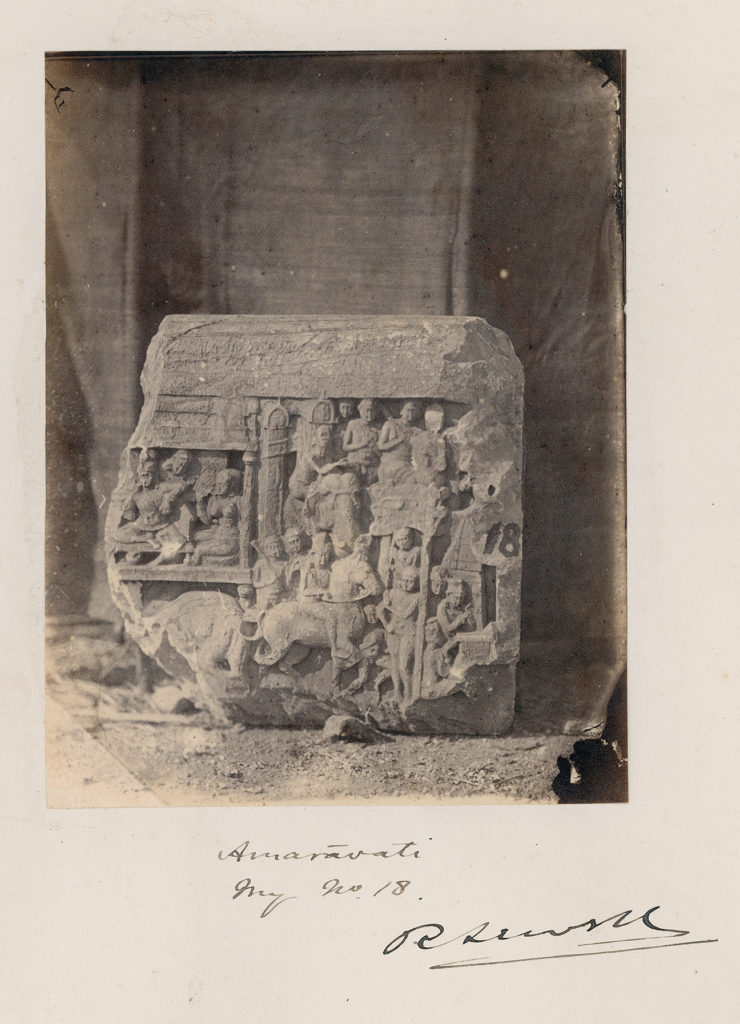[Photo.34/(002)] Amaravati (no. 18)
Photograph of excavated fragment sculpture panel showing horseman and attendant figures. The reference number allocated to the piece refers to Robert Sewell’s ‘Report on the Amaravati Tope, and Excavations on its site in 1877’ (London, 1880) in which the piece is described.
‘Not far from this pillar, but on the inner edge of the circular mound, and near the squared floor-stones formerly mentioned as having been found near the point E. in my plan, I found another slab partly exposed. This I completely unearthed and afterwards had photographed. No. 18. (2 ft. 6 in. square). A portion of the oter rail coping. One side has the roll-ornament, with its supporting figure; the emblem resting above the fold of the roll being in this instance the dagoba. On the inner side is a fragment of sculpture. On the left is seen a palace balcony, in which sits a chief and his wife, attended. Below, as if in a courtyard, an elephant is apparently bending in salute of his master. From the castle gates there rides a prince on horseback, with two footmen and an elephant and horsemen in attendance. The prince is riding up to a gateway of the Sanchi type (which General Cunningham calls a ‘toran’ gate), but his way is barred by a person who holds up a warning hand to him. Just in the gate stands a man with an umbrella, but whether this sign of loyalty is to be referred to the horseman, or the man who bars his progress, does not clearly appear. Inside the gate is a building of some kind (the marble breaks off here), at the doorway of which three persons are worshipping. The horseman would not appear to be Siddharta, as there is no glory round his head or other distinguishing mark.’
Robert Sewell
‘Report on the Amaravati Tope, and excavations on its site in 1877’ (London, 1880, p. 37)
Original negative not held. Part of a collection of twenty albumen prints mounted on card, with captions written in ink beneath the prints and all signed ‘R. Sewell’.

